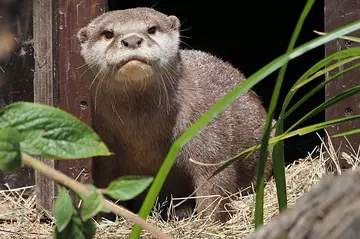
Asian short-clawed otter facts

What do Asian short-clawed otters look like?
Asian small-clawed otters, also known as oriental small-clawed otters, are the smallest of thirteen species of otter. As their name suggests, they have short claws that reach no further than their digits. These allow them to use their paws to effectively feel for food, such as crustaceans, in muddy banks. Extremely dexterous, Asian short-clawed otters catch their prey with their partially-webbed paws instead of with their mouth (unlike other otters).
The otters are also streamlined with flattened tails that they use to propel them through the water. Otters' eyes are designed so that they can see equally as well in water as out.
Incredibly, young otters do not open their eyes until they are 40 days old, taking their first swim after about nine weeks old.
What do Asian short-clawed otters eat?
You will often see these otters eating freshwater shrimps, crabs, mussels, frogs and snails.
What threats do Asian short-clawed otters face in the wild?
Asian short-clawed otters are under threat from deforestation, habitat destruction, water pollution, and hunting. They are listed as vulnerable on the IUCN red list.
Are there otters at Whipsnade Zoo?
Yes, Whipsnade Zoo is home to a family of Asian short-clawed otters - you'll find them in the Base Camp area of the Zoo, close to our red pandas.
